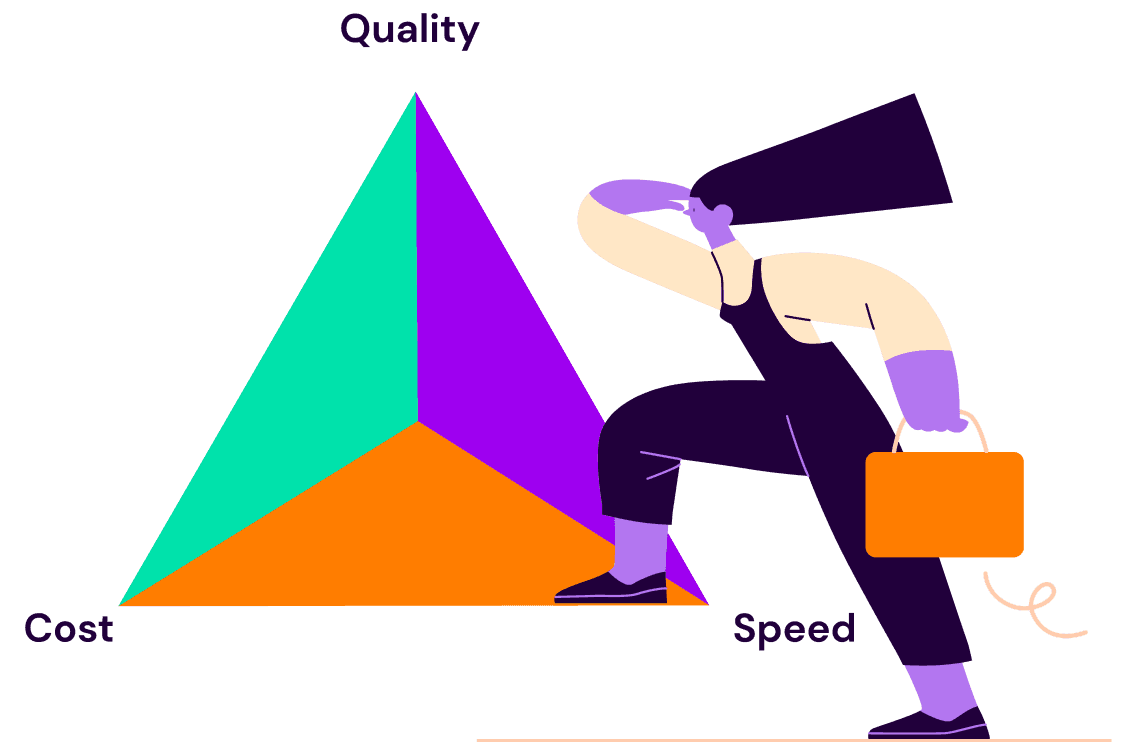
Back to blogs

8 Diversity Hiring Statistics Every Talent Strategist Needs to Know
Building a company of diverse employees has become a top priority for talent acquisition professionals. And it makes perfect sense. A diverse workforce leads to better decision-making, happier employees, and significant business gains.
E-book: How AI Can Support DEI Hiring
Download NowHowever, plenty of data shows there is progress to be made in improving diversity and inclusion in the workplace. In this blog post, we share eight diversity hiring statistics every talent leader needs to know.
Companies with Diverse Leadership Generate More Revenue
Having a diverse leadership team isn’t just a noble thing to do. Diverse managers and executives bring unique perspectives to the company, resulting in new ideas, greater innovation, and better business outcomes.
A study from Boston Consulting Group found that companies with above-average diversity on their leadership team generated 19% more revenue due to innovation than companies with below-average leadership diversity.
Source: Boston Consulting Group
Women Drive Profits and Champion Diversity—But Many are Leaving the Workforce
Prior to the COVID-19 pandemic, women and men tended to leave their companies at similar rates. However, the challenges of the pandemic have significantly impacted working mothers, resulting in nearly two million women considering leaving the workforce, according to McKinsey’s Women in the Workplace 2020 Report.
Women’s exodus from the workforce will have major consequences for their companies’ financial success and diversity hiring. McKinsey reports that companies with well-represented female leadership can have close to 50% higher profits than companies that lack female leadership. Additionally, more than 50% of women in senior-leader roles advocate for gender and racial diversity in their workplace.
Source: McKinsey’s Women in the Workplace 2020 Report
Job Seekers Want to Hear About Diversity and Inclusion from Current Employees
Many companies promote their diversity and inclusion efforts as part of their recruiting strategy. Today’s job seekers value diversity when considering an opportunity but want to hear about employees’ first-hand experiences in the workplace.
Glassdoor’s D&I Workplace Survey revealed that 66% of job seekers trust employees the most when it comes to understanding what diversity and inclusion at a company, significantly higher than the trust they put in senior leaders (19%), the company’s website (9%), and recruiters (6%).
Source: Glassdoor’s D&I Workplace Survey
Hispanic and Black/African American Professionals are Underrepresented in STEM Jobs
Due to the high demand and specialized skills required, STEM jobs offer high compensation. According to Pew Research Group, the median annual earnings for a STEM professional is $77,400 compared to $46,900 for those who work in non-STEM jobs.
However, the same study found that Hispanics hold only 8% of STEM jobs in the U.S., despite making up 17% of the workforce. Black/African Americans hold only 9% of STEM jobs while making up 11% of the workforce. Whites comprise 67% of STEM jobs but account for 63% of the workforce.
Source: Pew Research Group
Asian Americans Struggle to Advance their Careers
One of the biggest challenges Asian Americans face is having the opportunity to climb the ranks in their company. IBM VP and CTO Radha Ratnaparkhi says, “Asians suffer on the sponsorship front—often dismissed as brilliant technologists but not considered capable of having executive presence to champion key initiatives.”
A McKinsey report found there are 64% fewer Asian American men and 39% fewer Asian American women in senior roles compared to entry-level positions. According to an IBM study, Asian Americans account for 4.4% of Fortune 1000 board seats and only 1.47% of those seats are held by Asian American women.
LGBTQ+ Employees Still Feel a Lack of Acceptance at Work
The U.S. Supreme Court ruled in June 2020 that LGBTQ+ people are protected from workplace discrimination under the 1964 Civil Rights Act. Despite the landmark ruling and efforts from many companies to encourage employees to be their authentic selves at work, many LGBTQ+ professionals say their workplace isn’t inclusive.
The National Human Rights Campaign Foundation reports that 51% of LGBTQ+ employees hide their sexual and/or gender identity at work. 58% say they’ve heard jokes or derogatory comments about LGBTQ+ people but only 5% reported those issues to human resources.
Source: National Human Rights Campaign Foundation
Job Seekers with Distinctively Black Names Get Passed Over by Recruiters
It has long been known that resume details (first name, last name, photos) lead to unconscious bias that influences how recruiters and hiring managers assess candidates. A recent study validates this claim—finding that job seekers with distinctively Black names are less likely to be contacted after applying.
Researchers from the University of California, Berkeley and the University of Chicago sent 83,000 fake applications to 108 of the largest employers in the U.S. They discovered that distinctively Black names reduced the probability of employer contact by 2.1 percentage points compared to distinctively White names. They also found that the lack of contact was concentrated to 23 specific companies.
Source: The National Bureau of Economic Research
Veterans Don’t Get to Use Their Full Skillset
Military service provides veterans with unique training and experience. According to a Pew Research Survey, more than half of veterans say their service taught them skills that prepared them for jobs outside the military.
However, many veterans don’t get the opportunity to fully apply their skills in their post-service careers. A joint study from the Call of Duty Endowment and ZipRecruiter found that 31.8% of veteran professionals are “underemployed,” meaning they settle for jobs where “employment is at a skill level below that which the job seekers were objectively qualified for.”
Source: Pew Research and Call of Duty Endowment and ZipRecruiter
How to Improve Diversity in Your Company
Most talent acquisition professionals understand candidates want to work for a company that is welcoming to people from all backgrounds. In fact, 3 in 4 job seekers say they value workplace diversity when considering an opportunity, according to the Glassdoor Survey referenced earlier in this article.
The challenge many companies face is translating diversity hiring intentions into actions and results. SeekOut’s data-driven diversity recruiting approach helps recruiters eliminate unconscious bias and quickly source qualified female, Hispanic/Latinx, Black/African American, Asian, Native Hawaiian, LGBTQ+, and veteran candidates.
SeekOut is rated the #1 Diversity Hiring Software by G2
SeekOut’s Diversity Talent Analytics helps recruiters set realistic diversity targets, drive hiring manager conversations for diversity-friendly job descriptions, and hone their diversity sourcing strategy. Learn how your company can create a data-driven diversity hiring strategy using SeekOut and easily build a diverse workforce.
DEI Goes Beyond Diversity Hiring
A diversity hiring strategy is the foundation of DEI—but there is more to truly being a diverse and inclusive company. After all, if the number of diverse employees exiting your organization outpace the number you bring in, your hiring efforts are meaningless.
The statistics outlined in this article show there are advantages to workplace diversity, as well as deep-seated issues that prevent people from underrepresented groups from having the same career opportunities as everyone else. At SeekOut, we say diversity cannot work without inclusion, and diversity and inclusion cannot be sustained without belonging. Hire diverse employees and ensure they are treated fairly, heard, appreciated, and made to feel like they belong.
If you’re trying to improve diversity recruiting, tap into tech talent for digital transformation, or become a talent advisor, we should connect. Request a demo today and learn why SeekOut is rated the #1 Diversity Hiring Software by G2.
See us in action
Learn how SeekOut unifies people data to help organizations reach their talent goals
Request a demo



